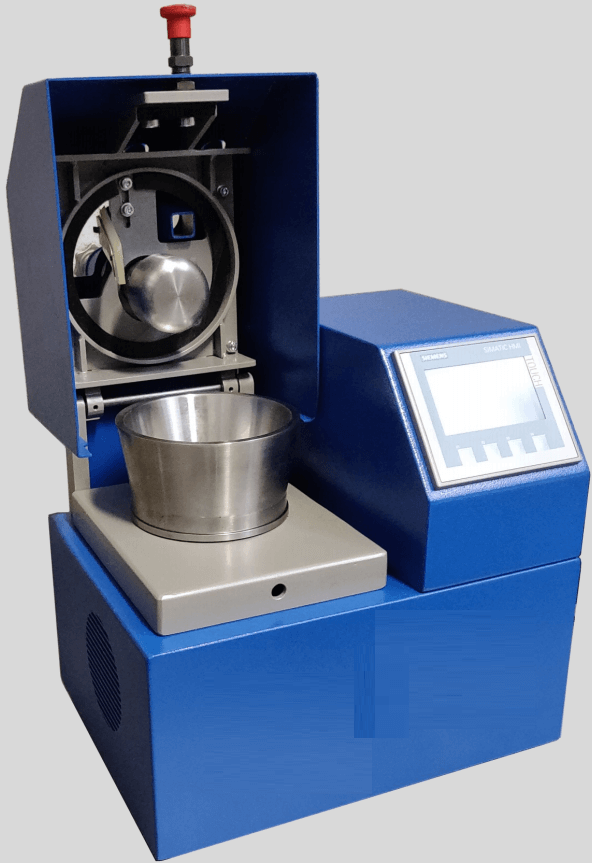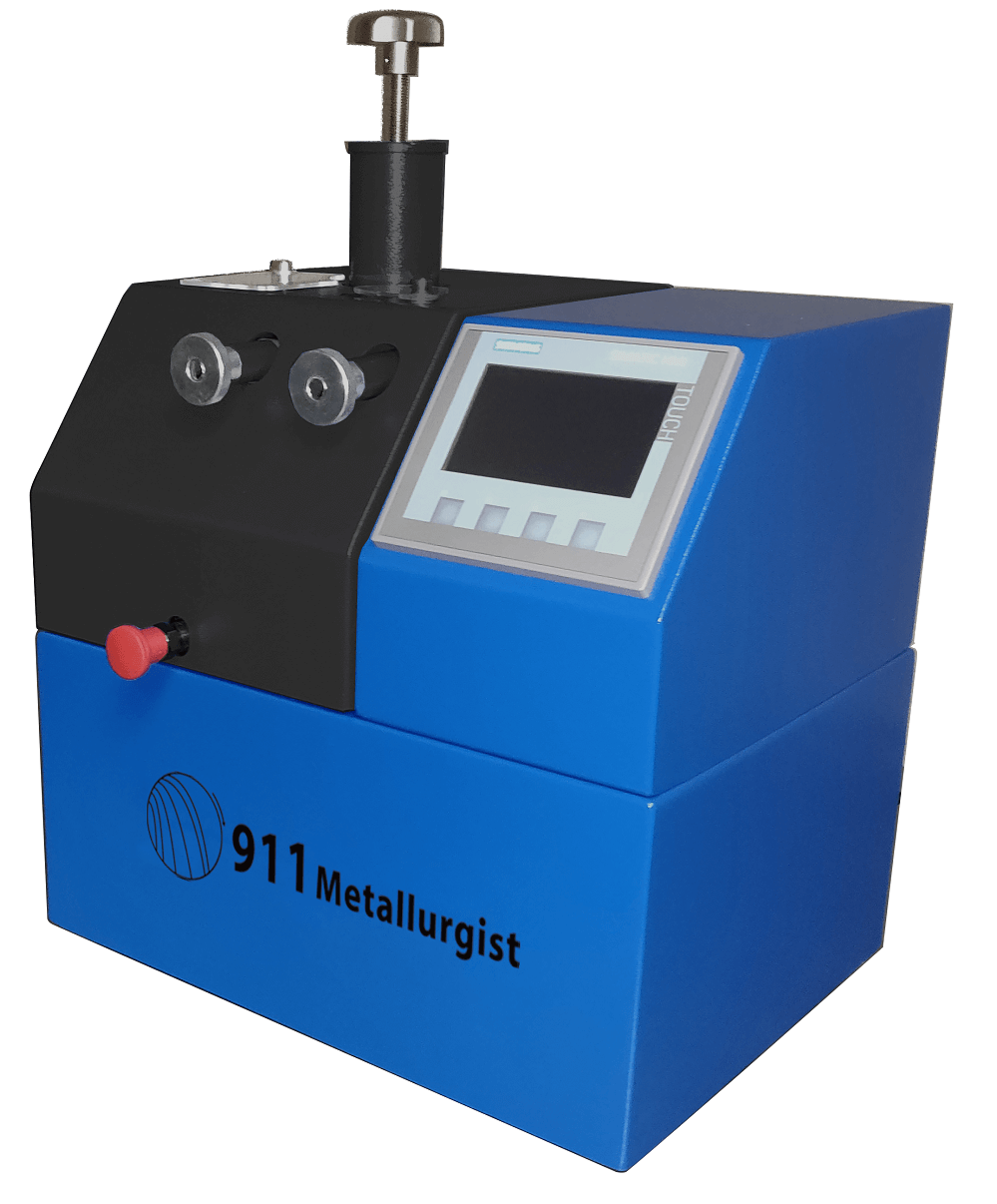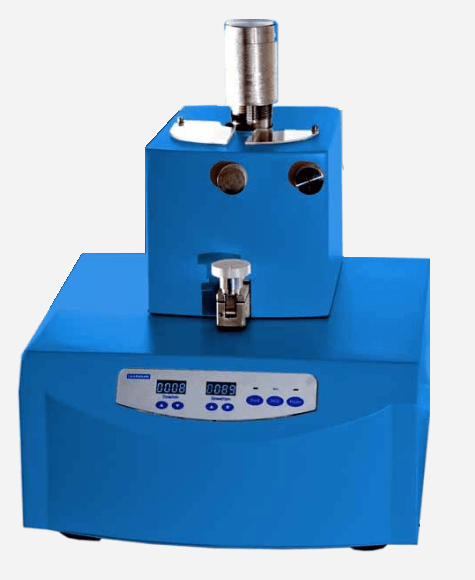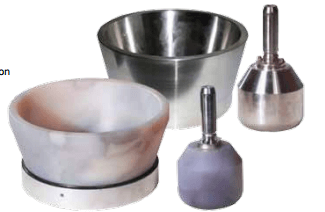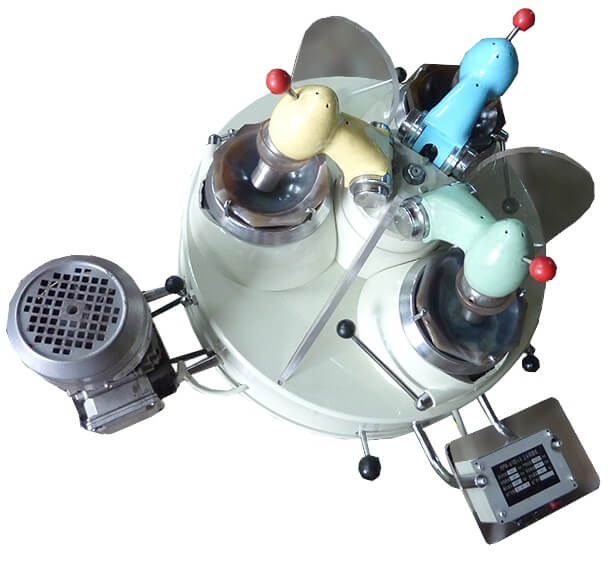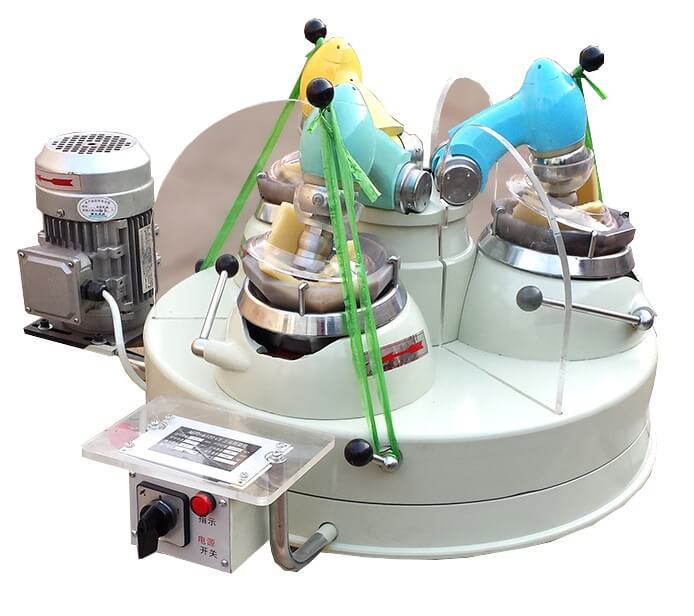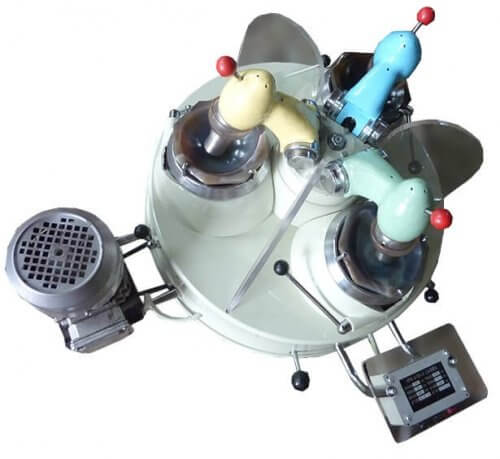Automatic Laboratory Mortar Grinder
US$6,500
The Electric Automatic Laboratory Mortar Grinder Mill Model 911MPEMG100 is used to reproducibly grind, homogenize and mix a wide range of solid materials in dry / wet or cryogenic condition. The material to be processed falls into the Pulverizing area between Mortar and Pestle by top feeding via the opening which is at the inlet cover. The material is then pulverized and mixed between the Mortar inner surface area and the bottom of the pestle. In order to match the necessary top pressure with the requested end fineness and the breaking behaviour of the sample to be prepared the MG100 is equipped with and adjustable. Top Pressure Mechanism with scale and a variable speed setting 50-130 rpm and a flexible scraper setting.
Only due to the combination of this 3 key adjustment features a wide range of sample preparation tasks can be reached.
No other grinding system is more easy to clean then the Model 911MPEMG100 Electric Mortar GrinderMill. When the grinding process is finished the Mortar and Pestle can be taken out with a bayonet lock in order to perform a quick cleaning of the grinding tools.
Ideal for fine grinding, homogenizing, triturating of samples in laboratory
The Electrical Mortar Grinder Mill is the central machine in today’s laboratory sample pre-preparation. This system is suitable for the fine grinding of any dry substance, as well as for suspensions with different viscosities for analysis, quality control and material testing. It is perfectly suitable for the homogenization of creams and pastes. Typically samples with a feed size of up to 8-10mm and a total batch of up to 200 ml (volume depending on the characteristic of the samples) can be ground down to 10-20 µm.

Description
Features and Benefits
- 5 different grinding media available
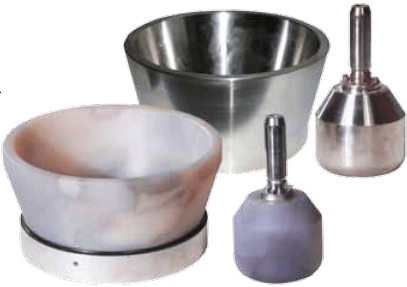
- 3 different scraper materials available
- Quick and extremely easy to clean
- Variable speed setting 50-130 rpm
- Digital time setting
- Digital speed setting
- No tool required to open
- No tool required to take off pestle
- No tool required to take off mortar
- Dust tight milling chamber
- Wet grinding
- Dry grinding
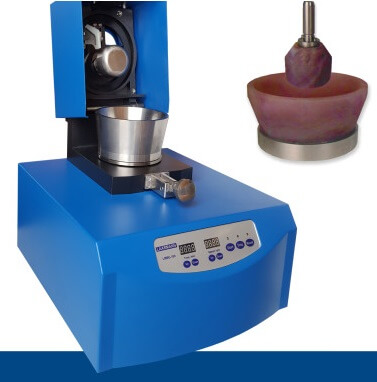
- Cryo grinding
- CE certified
Applications
- Cocoa beans / chocolate paste etc.
- Food and animal food
- Maize, beans
- Creams, emulsions,
- Soil samples
- Minerals
- Glass, ceramics
- Cement clinker, cement
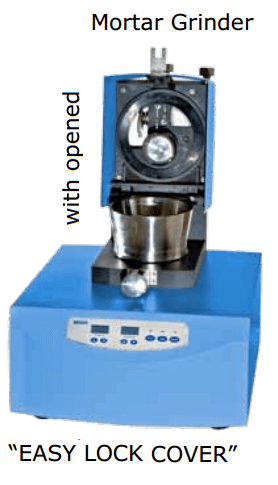 | 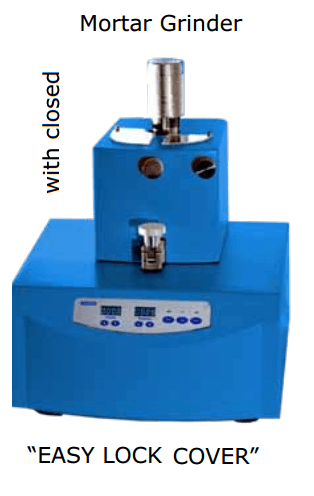 |
Grinding media available in 5 different materials
- Turbulent Blending
- Laminar Blending
- Liquid Dispersion
- Gas Liquid Dispersion
Electric Mortar Grinder Mill Specifications
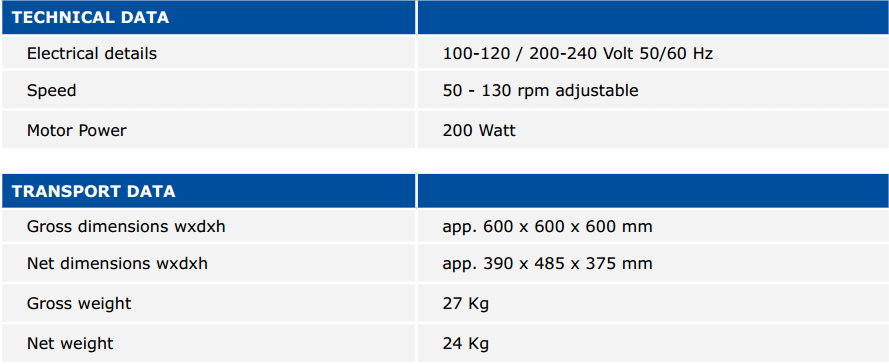
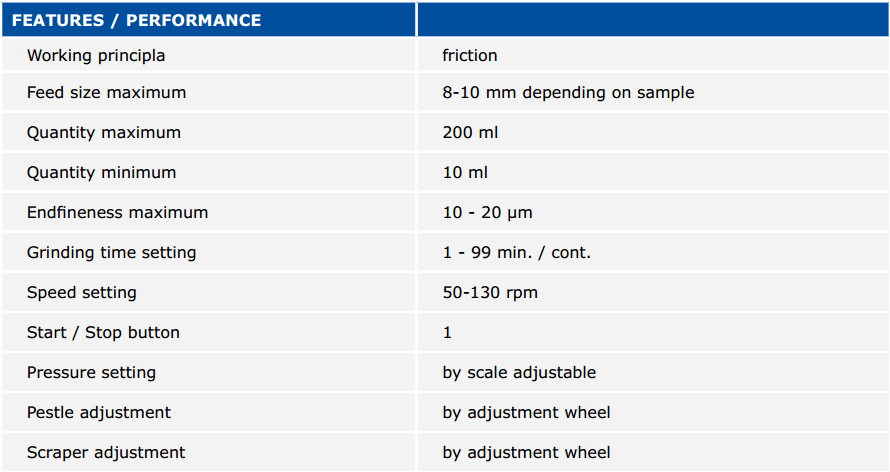
ELECTRIC Mortar Grinder
Universal, High Performance Mortar Grinder for processing of solid materials in dry, wet or cryogenic condition
- Dry Grinding / Wet Grinding / Ultra Fine Grinding / Cryogenic Grinding
- Mixing
- Cell disruption for DNA / RNA extraction
- The MG100 can handle samples from 10 up to 200 ml
A Superior Mortar Grinder engineered to reproducibly grind and mix sample volumes from 10 of up to 200ml.
High operator convenience and maximum safety
The Mortar Grinder is the central machine in a sample prep. Laboratory of today. This system is suitable for the fine grinding of any dry substance, as well as for suspensions with different viscosities for analysis, quality control and material testing. It is perfectly suitable for the homogenization of creams and pastes. Typically samples with a feed size of up to 8-10mm and a total batch of up to 200 ml (volume depending on the characteristic of the samples) can be ground down to 10-20µm.
Selection Guide Recommended Grinding set (Mortar and Pestle)

- Extremely easy cleaning
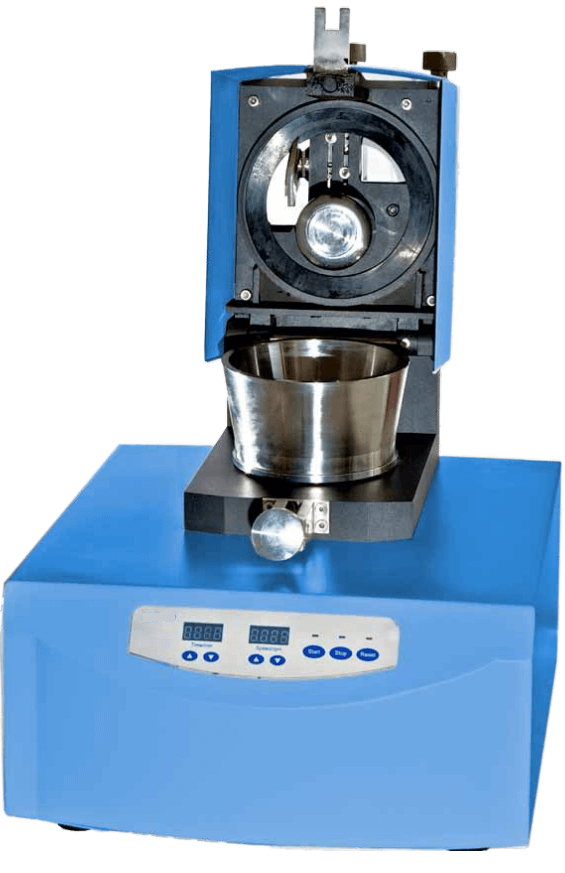
- Suitable for dry, wet & cryogenic grinding
- Possible to add and to remove sample material during the milling process via Cover inlet
- Representative results due to digital time and speed setting
- Precise and optimized results due to variable speed 50-130 rpm
- CE conform
- Meet all application tasks due to a wide selection of grinding tools for the mortar and the pestle.
- Meet all application tasks due to a wide selection of scraper materials (Vulkollan, Teflon, Beachwood)
- Positioning and removal of Mortar and pestle without tool
- Precise and reproducible pestle setting due to scale adjustment
- Solid steel housing
- Option of pre-crushing for coarser materials
Grinding and Mixing examples Before / After
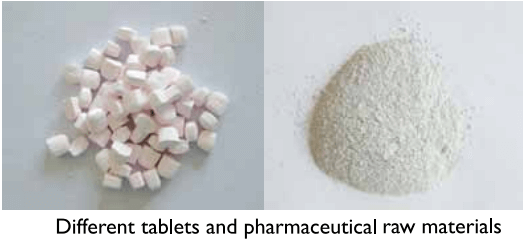 | 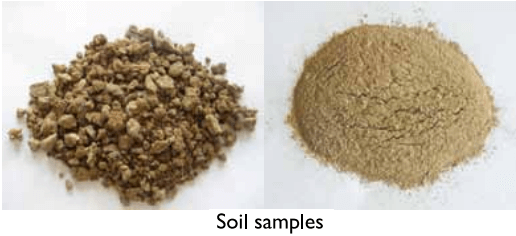 |
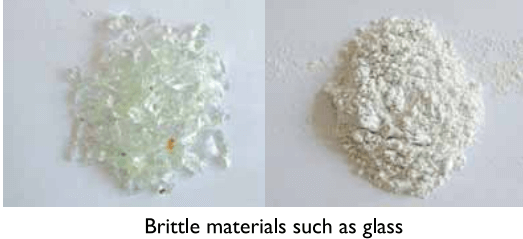 | 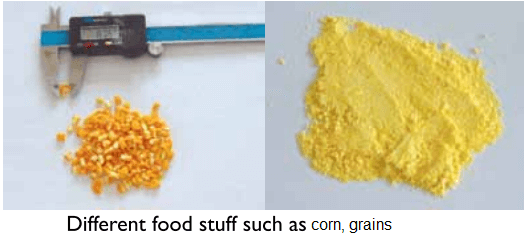 |
Universal, High Performance Mortar Grinder for processing of solid materials in dry, wet or cryogenic conditions. A Superior Mortar Grinder engineered to reproducible grind and mix sample volumes from 10 up to 200ml.
Top Pressure Mechanism with scale and a variable speed setting 50-130 rpm, as well as a flexible scraper setting. Only due to the combination of this 3-key adjustment feature, a wide range of sample preparation tasks can be reached.
No other grinding system is easier to clean than the 911MPEMG100 Mortar Grinder. When the grinding process is finished, the mortar and pestle can be removed by a bayonet lock in order to perform a quick cleaning of the grinding tools.
High operator convenience and maximum safety
Maximum grinding performance and maximum safety are important for mills. Due to an integrated safety switch, the machine can only be started when the “Easy Lock Cover” is closed. The “Adjustment Mechanism” allows simple, fast setting changes and fine adjustment. The cover, as well as the housing, of the 911MPEMG100 is made from solid steel. The ergonomic design of the machine and the front panel ensure easy and simple setting of all working parameters.
Universal, high performance Mortar Grinder for processing of solid materials in dry, wet or cryogenic condition
- Dry Grinding/Wet Grinding /Ultra Fine Grinding/Cryogenic Grinding
- Mixing
- Cell disruption for DNA/ RNA extraction
- The MG100 can handle samples from 10 up to 200 ml
Performance features MG 100
- Extremely easy cleaning
- Suitable for dry, wet & cryogenic grinding depending on grinding material
- Possible to add and to remove sample material during the milling process via cover inlet
- Representative results due to digital time and speed setting
- Precise and optimized results due to variable speed 50-130 rpm
- CE conform
- Meet all application tasks due to a wide selection of grinding tools for the mortar and the pestle.
- Meet all application tasks due to a wide selection of scraper materials (Vulkollan, Teflon, Beachwood) no tool required
- Precise and reproducible pestle setting due to scale adjustment
- Solid steel housing
- Option of pre-crushing for coarser materials
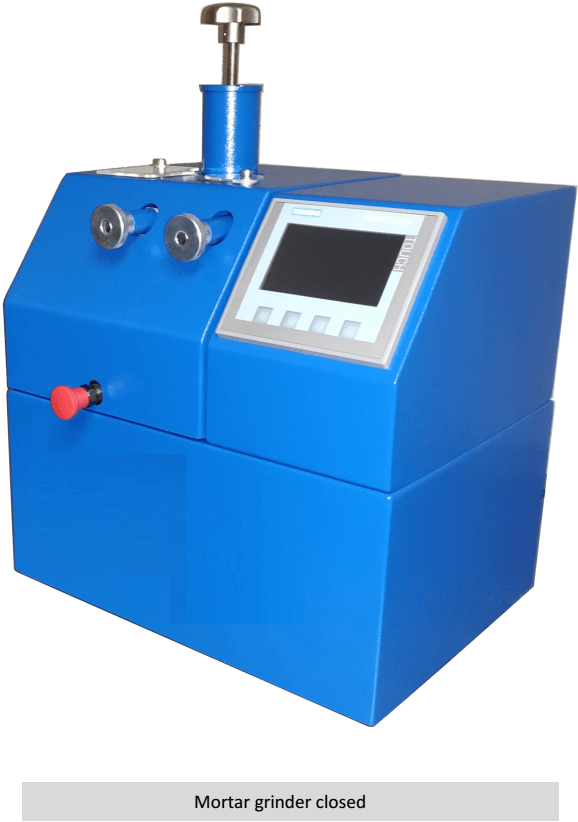 | 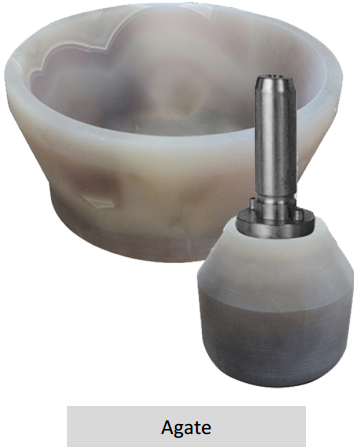 |
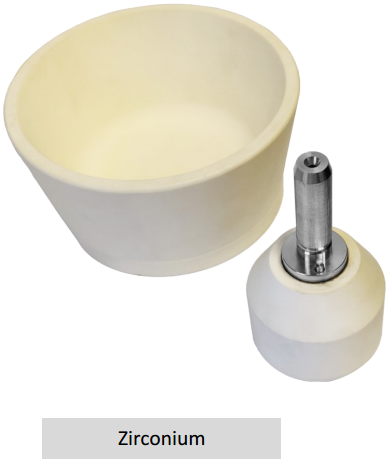 | 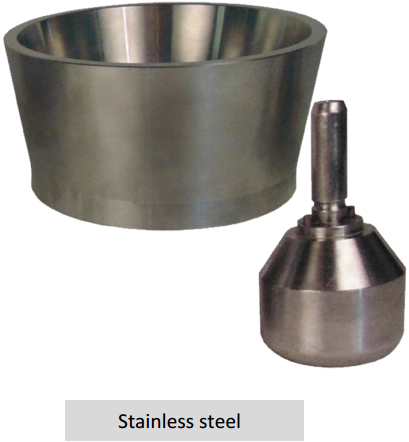 |
A Mortar Grinder engineered to reproducibly grind and mix sample volumes from 10 of up to 200ml
Method of operation
The Mortar Grinder Model MG100 is used to reproducibly grind, homogenize and mix a wide range of solid materials in dry / wet or cryogenic condition. The material to be processed falls into the Pulverizing area between Mortar and Pestle by top feeding via the opening which is at the inlet cover. The material is then pulverized and mixed between the Mortar inner surface area and the bottom of the pestle. In order to match the necessary top pressure with the requested end fineness and the breaking behaviour of the sample to be prepared the MG100 is equipped with and adjustable Top Pressure Mechanism with scale and a variable speed setting 50-130 rpm and a flexible scraper setting.
Only due to the combination of this 3 key adjustment features a wide range of sample preparation tasks can be reached.
No other grinding system is more easy to clean then the MG100 Mortar Grinder.
When the grinding process is finished the Mortar and Pestle can be taken out with a bayonet lock in order to perform a quick cleaning of the grinding tools.
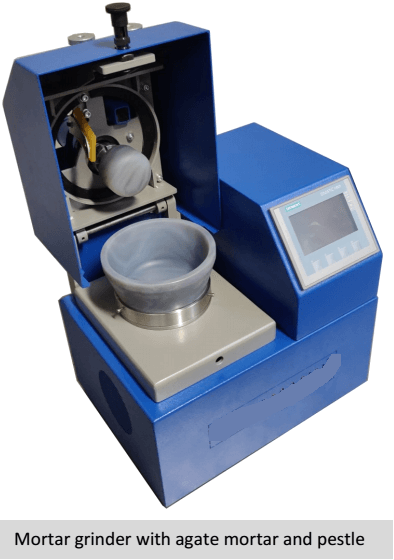
Grinding, homogenizing, triturating
The Mortar Grinder is the central machine in a sample preparation Laboratory of today. This system is suitable for the fine grinding of any dry substance, as well as for suspensions with different viscosities for analysis, quality control and material testing. It is perfectly suitable for the homogenization of cremes and pastes. Typically samples with a feed size of up to 8-10mm and a total batch of up to 200 ml (volume depending on the characteristic of the samples) can be ground down to 10-20µm.
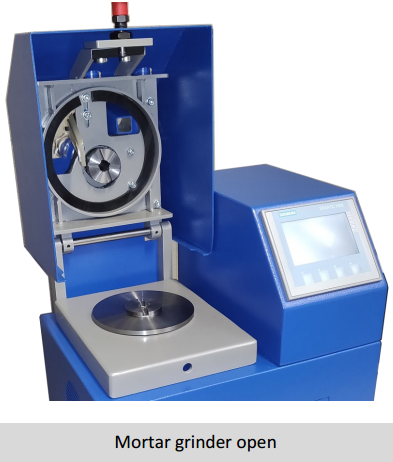
High operator convenience and maximum safety
The Mortar Grinder is the central machine in a sample preparation Laboratory of today. This system is suitable for the fine grinding of any dry substance, as well as for suspensions with different viscosities for analysis, quality control and material testing. It is perfectly suitable for the homogenization of cremes and pastes. Typically samples with a feed size of up to 8 -10mm and a total batch of up to 200 ml (volume depending on the characteristic of the samples) can be ground down to 10-20µm.

We recommend always to use the same material composition for Mortar and Pestle.
Grinding and Mixing examples before / after
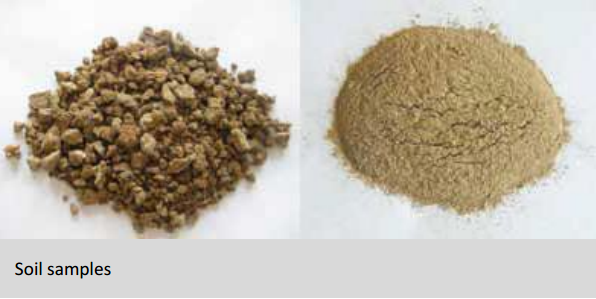
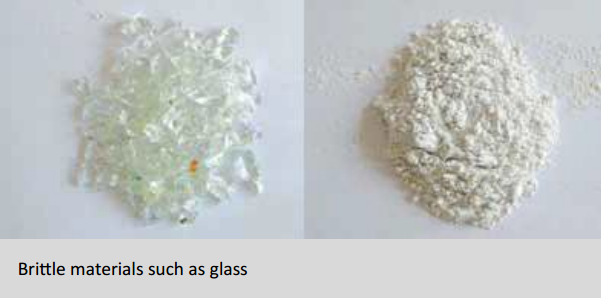
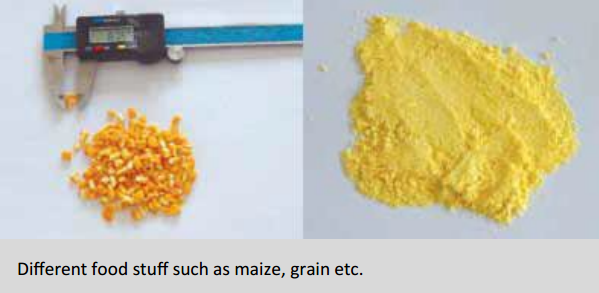
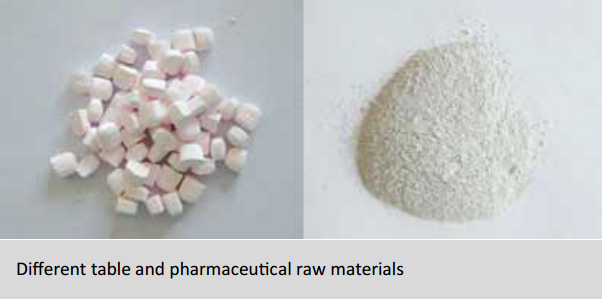
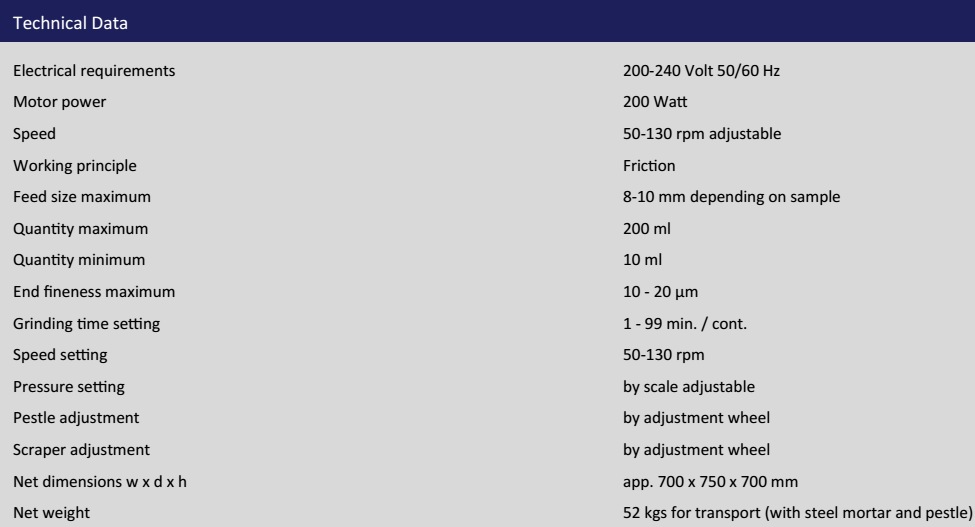
MORTAR GRINDER MANUAL
Foreword
Congratulations on your purchase of this Mortar Grinder. Only original replacement parts respectively purchased parts complying with the original state may be used. Guarantee claims are only valid if no changes are made to the original state of this Mortar Grinder. We assume no liability for damage caused by failure to comply with these instructions or by inappropriate behaviour. This technical manual may not be duplicated or passed on to third parties, either totally or partially
1.1 Supplied technical documentation
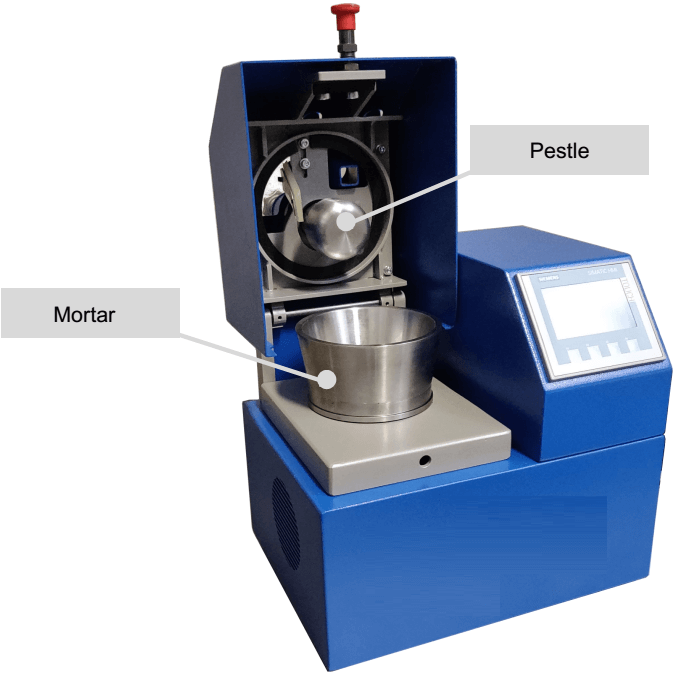
The following documentation was supplied together with the machine:
Operating manual for the Mortar Grinder, including:
CE certificate
1.2 Serial number
The machine number is located on the nameplate. Enter your serial number here:
This machine number must be stated when making any technical inquiries. The nameplate is located on the back of the machine.
Description and proper use of Mortar Grinder
2.1 Description and proper use of the Mortar Grinder
This Mortar Grinder is intended for
- Dry Grinding / Wet Grinding / Ultra Fine Grinding / Cryogenic Grinding
- Laminar Blending / Liquid-Liquid Dispersion
- Mechanical Alloying
- Cell disruption for DNA / RNA extraction
- The MG100 can handle samples up to 200 ml
The Mortar Grinder consists essentially of a powerful drive with driven Mortar Plate. It can be loaded with various Mortar and pestle combinations.
2.2 Improper usage

The Mortar Grinder is designed to be used with properly fitted Mortar and Pestle always made of the same
material. If any other kinds of material are fed into the machine, this can cause major accidents or damage
to the Mortar Grinder.
Safety instructions
3.1 General safety instructions
The Mortar Grinder has been manufactured using state-of-the-art engineering and technology and complies with the
valid safety requirements of EU directive 98/37/EG on the point in time of delivery.
The original state of the machine may not be changed. Safety devices may not be changed, removed or bridged. All
maintenance and repair work may only be carried out by qualified staff when the machine is at a standstill and
disconnected from the power supply.
3.4 Safety symbols

Failure to comply with the sections of text marked in this way result in danger. Injuries are possible. Damage to the mill and accessories is possible, special care is required.
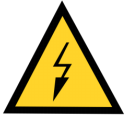
This symbol marks instructions for correct execution of certain jobs of work, e.g. that the work may only be carried out by an electrician.

Symbol for supplementary information and remarks.
3.3 Safety clothing
The operating staff at the machine must always use the personal safety gear prescribed by law and provided by the
employer. We recommend using safety gloves, working shoe’s and a face mask when working with dangerous material.
3.4 Requirements made of the operating staff
The staff responsible for operating and maintaining the machine must be trained and suitable for these jobs of work. Precision and safety in machine checks must be guaranteed. The responsible staff must have read and understood this operating manual.
There is an added risk of accidents during maintenance and servicing work. This is why all jobs of work must be carried out with the machine at a standstill by experienced and skilled staff capable of taking the safety precautions for major maintenance work.
The machine may only be operated, maintained and repaired by trained staff. In particular, these people must have read and understood the complete operating manual in the interests of all those involved. This is the only way to guarantee safe, trouble free operation.
3.5 General safety instructions

Only switch the Mortar Grinder on when the easy clamp system is tightened properly

Bring the Mortar Grinder Mill directly to its operating position.
3.6 Safety clothing

Observe the same safety precautions as for maintenance! Switch off the Mortar Grinder before cleaning, safeguard the main switch. Do not use corrosive, easily flammable substances as cleaning agents.
3.7 Maintenance

To be carried out only by qualified staff (see also 3.4). Wear safety gloves. Switch machine off. After maintenance, fit all the safety devices back in their correct positions and check that they function properly.
Check every month:
– State and proper function of the easy clamp system. Check O-rings
– Functions of the limit switches (only by the company electrician)
– Condition of the Mortar and the pestle.
Electrical equipment of the Mortar Grinder
4.1 Maintenance

In the case of malfunctions, interrupt the power supply immediately and secure it to prevent the machine being switched on again. Only use the fuses stated in the circuit diagram. Connection, maintenance and servicing should only be carried out by an electrician.
4.2 Electrical connection

The electrical connection should generally be carried out by an electrician. The works guarantee becomes null and void when the motors are mounted by the customer.
The motors are connected up according to the operating manual of the motor manufacturer.
Transport and erection of the Mortar Grinder
5.1 General transport information
Guarantee or compensation claims are null and void when the damage has been caused by improper transport or improper handling. Examine the Mortar Grinder for any signs of transport damage immediately after transport, have any such damage acknowledged in writing by the carrier, inform the insurance company and the supplier.
5.2 Weight and dimensions
Mortar Grinder dimensions:
1 carton with Inlay / on Pallet 700x750x700mm
Total gross weight: 52 kgs for transport (with steel mortar and pestle)
5.3 Erection and assembly
Check as follows:
- Check all fixing screws
- Check all safety fasteners, and remove any foreign bodies from the Milling chamber.
Check electric system (only by an electrician)
- Operating voltage using a voltmeter
- Electrical fuses
- Check electric cables for any signs of damage
- Check connections
5.4 Erection site
The machine can be easily moved within the laboratory or the workshop.
The following points must be observed at the erection site of the machine:
- A constant temperature must be guaranteed. It should not be under +5°C or above +40°C.
- The humidity may not exceed 85% continuously.
- The main switch of the Mortar Grinder must be freely accessible.
Taking the Mortar Grinder into storage.
The Mortar Grinder is to be stored in a dry room. Protect from the damp, from a corrosive atmosphere and from temperatures below +5°C and above +45°C.
Electrical connection
6.1 Connection
When connecting the machine to your local power supply source please pay attention to the information on the sticker at the rear of the machine showing the technical information.

These jobs of work may only be carried out by qualified staff. The connections must be completed carefully. Errors can pose a mortal danger. The connection regulations of the responsible power utility company must be observed.
- Connect up the machine according to the circuit diagram.
- Check proper position of Mortar and Pestle
6.2 Starting up the Mortar Grinder
Only start the Mortar Grinder with properly inserted Mortar and Pestle.
Operation
7.1 Control elements and their use
The machine can be easily moved within the laboratory or the workshop.
The following points must be observed at the erection site of the machine:
- A constant temperature must be guaranteed. It should not be under +5°C or above +40°C.
- The humidity may not exceed 85% continuously.
- The main switch of the Mortar Grinder must be freely accessible.
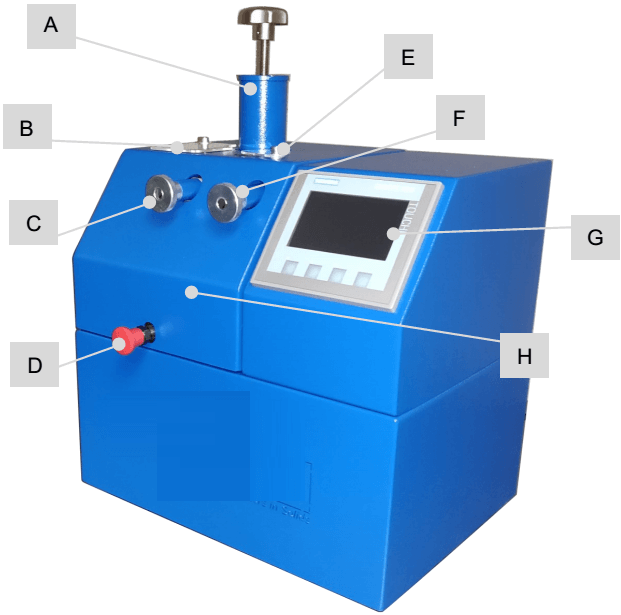 | 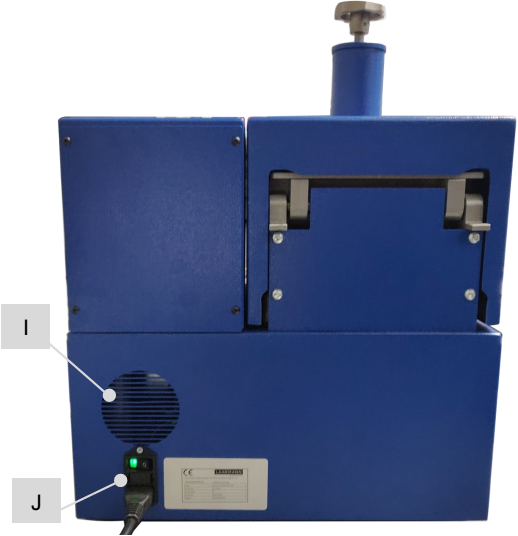 |
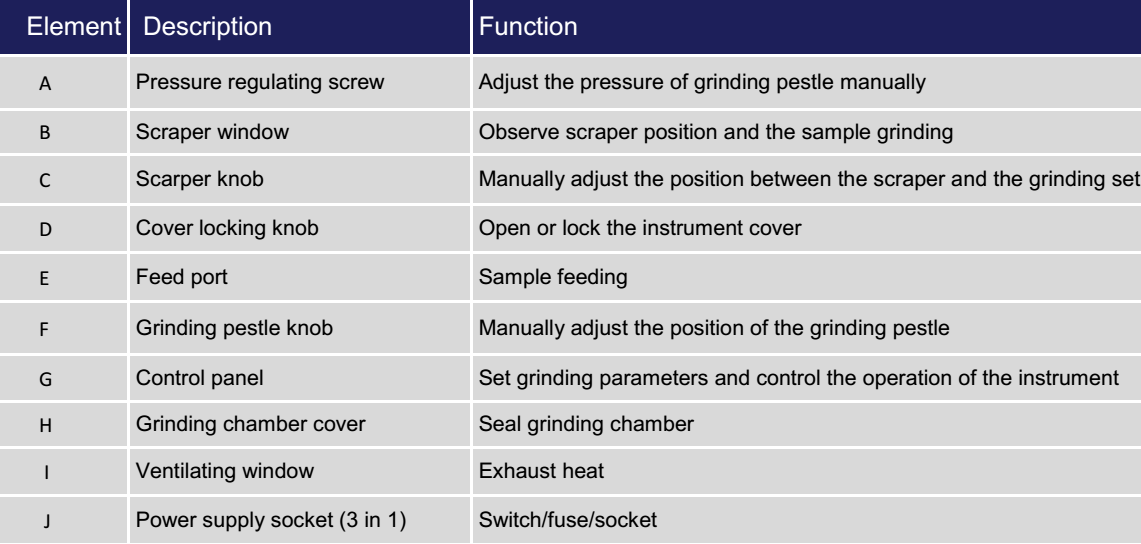
7.2 Mortar grinder part functions
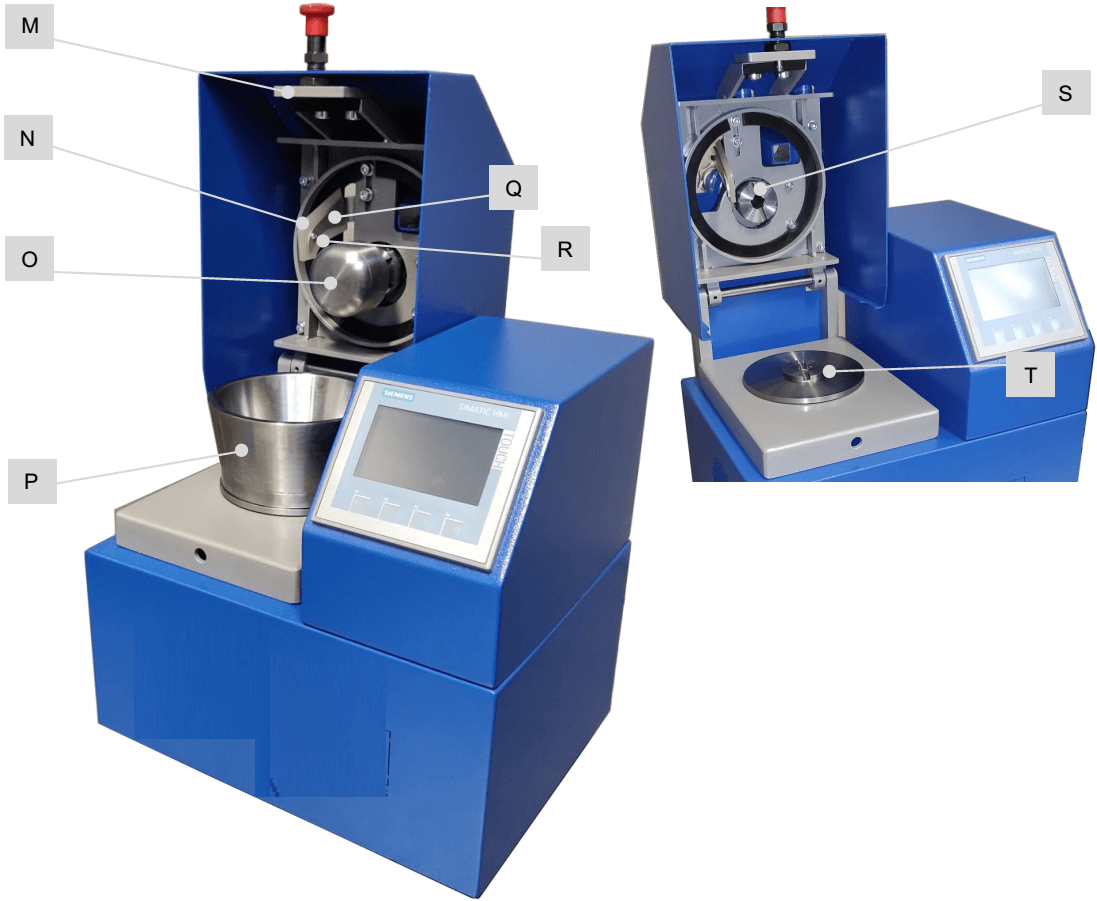
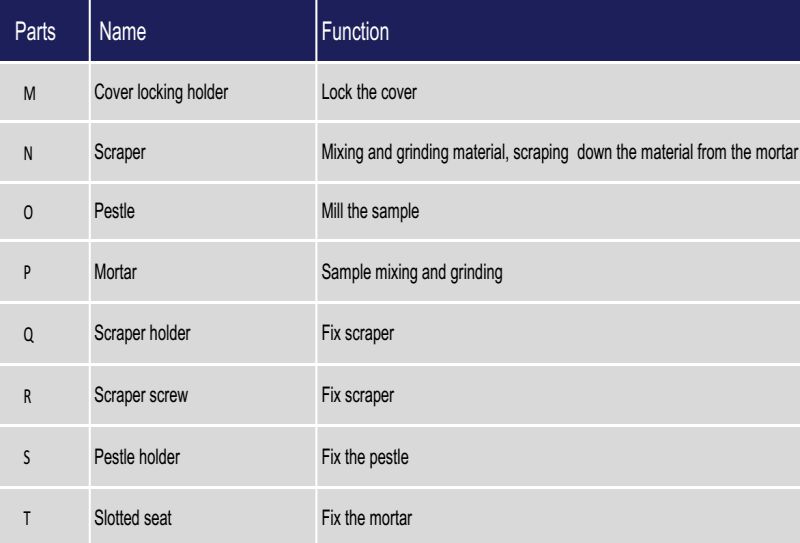
7.3 Switching the Mortar Grinder ON and Off
Functions Starting the MG100 The ON/OFF and switch G is located at the rear of the machine, Figure 2
The grinding parameters can now be selected and the machine is ready for operation. Push the START button.
The Motor starts and the Mortar base plate start the rotation.
When connecting the machine to your local power supply source please pay attention to the information on the sticker at the rear of the machine showing the technical information.
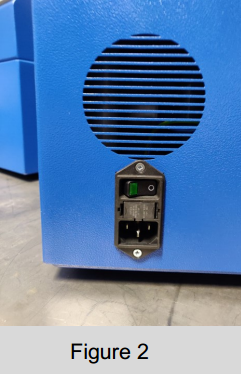
7.4 Inserting / replacing the Mortar and Pestle
In order to guarantee a smooth running operation of the MG100 it is necessary that both Mortar and Pestle are inserted and made from the same material.
For example: Mortar and Pestle made from stainless steel or made Mortar and Pestle from Agate.
Attention: Never Mix the Material (Agate and Steel) because of breakage.
Make sure that the Mortar and pestle are properly in the Holders of the machine.
When removing and opening hot or cold grinding jars always wear protective gloves.
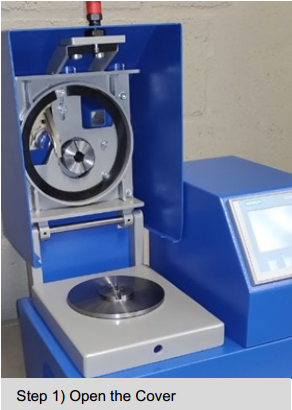 | 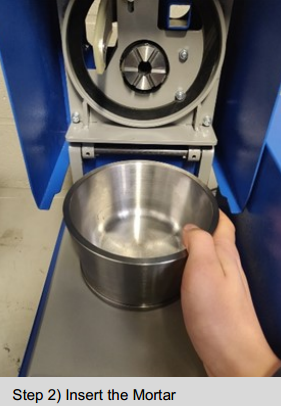 |
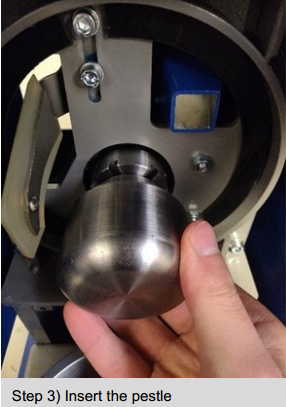 | 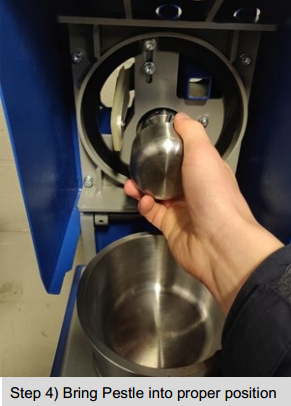 |
7.5 Program setting
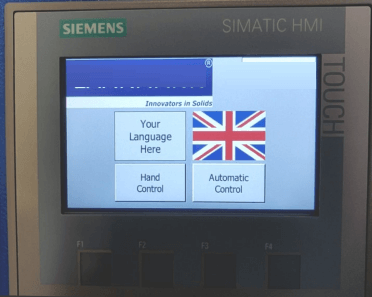
Starting Screen
This is the starting screen for the installation.
Here you can select “Hand Controls” for manual input or select “Automatic System” for automatic.
Additional languages can be added on request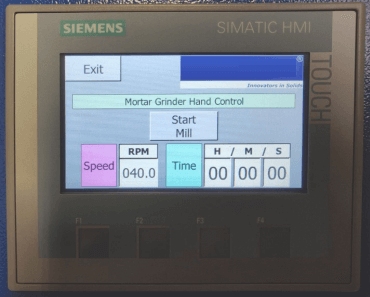
Hand control
Here you see the overview of the manual system.
With hand control you can start the machine and change the rpm and time during the run
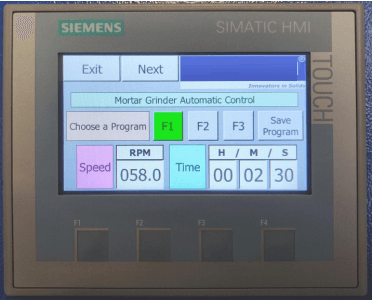
Automatic control
This is the overview for the automatic system.
You can program up to 3 programs.
The first time you need to set the parameters and press “save program” afterwards the system will save the parameters and these won’t be needed to put in again.
You can load each program (after saving it) by pressing on the program number. Now the machine will load the parameters corresponding
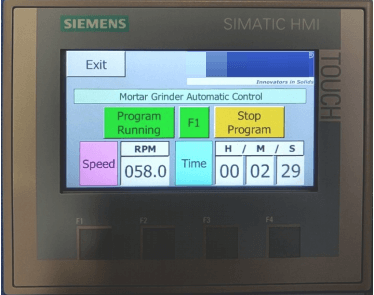
After setting the parameters or after loading the program you can press Next. You will see overview of the program and from here you can press Start program after that the machine will start running the program. You can press Stop programs any time you like if you wish to stop the program
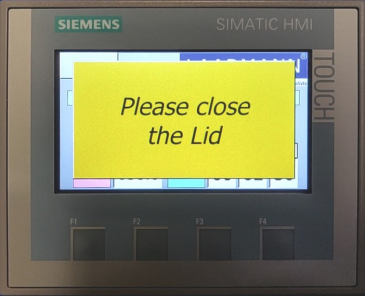
Safety
For safety measures the program will not start if not lid is not closed properly. If this happens close the lid or check if the cover locking knob is not locked completely
Working instructions for operation
8.1 Selection Guide Mortar and Pestle

This declaration of conformity confirms compliance of the above mentioned equipment to the relevant sections of the following European Directives:
91/368EWG European machine guideline
73/23/EWG EC Low Voltage Guidelines
EN 292, 294, 418 Safety guidelines
VBG 1,4,5 en 22 General electrical facitilies
89/336/EEC Electromagnetic Compatibility Directive (EMC)
EN 5008-1-1992 Emissions
EN 50082-1-1992 Immunity
EN 60204-1 Part 1 Safety of Machinery – Electrical Equipment of Machines
WARNING:
This equipment is required to be operated strictly in accordance with the instructions given in the operating manual supplied with the product. All supply voltages and frequencies as stated on the rating plate must be used.
This conformity certificate will lose its validity in case of:
- Usage of unlicensed spares
- Usage of unlicensed accessories
- Any self made modifications of the machine
Mechanically Operated Agate Mortar
Agate Mortar
For finely pulverizing small samples, already reduced by means of the iron mortar and pestle to pass a No. 100 sieve, the agate mortar is indispensable; except when the ore or mineral is very soft, when a Wedgwood mortar and pestle may be used. From the size and shape of the ordinary agate mortar and pestle the operation of grinding is very tedious. It may be greatly facilitated, however, by cutting a hole, of such size and shape as to hold the mortar firmly, in the middle of a block of hard wood, a foot or so square. The pestle is then fixed in a piece of round brass tubing of sufficient bore to hold it firmly, or else in a round hard wood handle.
Mechanically Operated Agate Mortar
Some ten or fifteen years ago Mr. Maunsel White, of the Bethlehem Iron Company, designed a mechanically operated agate mortar and pestle for use in the laboratory of the above concern. This grinder is illustrated and described in Blair’s ‘‘The Chemical Analysis of Iron.”
The McKenna Bros. Brass Co., Pittsburg, Pa., have also brought out a mechanically operated agate mortar and pestle. This is illustrated in Fig. 72. It consists of a revolving table on which the agate mortar is clamped, while the agate pestle is firmly fixed in a shaft revolving at a slight angle from the vertical. This machine reproduces almost exactly the motion used in hand grinding. The spring at the top of the sliding rod, to which the agate pestle is fixed at the bottom, can be adjusted to give any desired pressure, or can be thrown back entirely to allow the pestle to be raised in removing the agate mortar. The mortar is readily removed by loosening a set screw and dropping one of the four posts holding the mortar in place. A scraper keeps the ore in the center
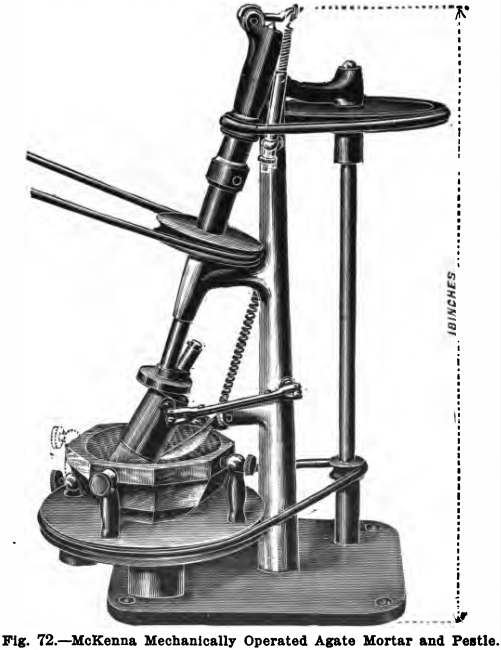
of the mortar, and the combined rolling and sliding motion of the pestle, which is controlled by a ball and socket side arm, reduces the hardest ore very rapidly, no attention being required from the operator. The grinder may be operated by any convenient power, of which not to exceed 1/8 horse-power is required. The mortar used has a diameter of about 4¼ inches. These mortars were introduced into many laboratories and gave good satisfaction.
The agate mortar is, of course, intended only for grinding very small quantities (5 or 10 grams) of ore at a time. It has one great advantage over other forms of pulverizers in that it can be used to reduce the hardest ores to a fine powder without danger of contamination of the sample from the wear of the mortar and pestle. When soft materials, such as coal have to be ground, large Wedgwood mortars and pestles are very useful. In using these, however, the material should be merely rubbed between the
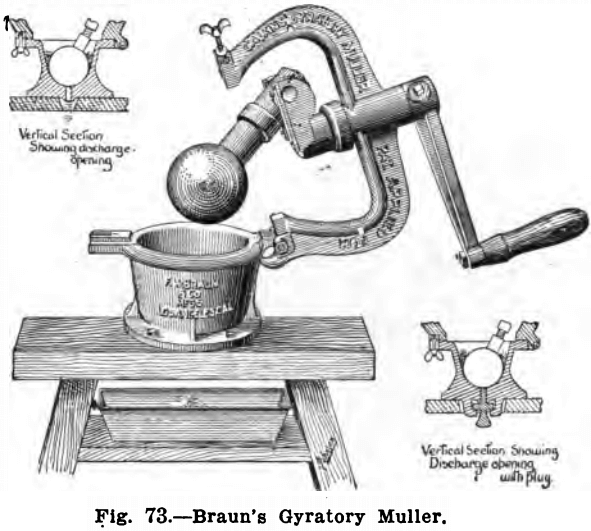
pestle and the mortar, and never pounded, for fear of contaminating the sample with splinters of porcelain.
Mortar and Pestle
Iron mortars can be obtained in a variety of shapes and sizes. Usually for this work, however, two mortars will be found handy, one of about a quart capacity and one holding about 2 gallons. These mortars should have their inside surfaces chilled. This will make the wearing surface of the mortar hard, while the iron itself will be tough enough to withstand the blows of the pestle. If the mortar and pestle are made of steel, they should be tempered, and the temper drawn from the outside of the mortar, leaving the latter tough.
In pulverizing very hard ores, the wear and tear on the pestle and mortar is often enough to contaminate the sample, to an appreciable degree, with splinters, etc., of iron. If the material to be powdered is neither magnetic nor contains magnetic substances, the iron entering the sample from the mortar and pestle may be removed by the use of a magnet. For pulverizing samples of spiegel or white iron, mortars of high carbon steel, properly tempered and toughened as mentioned above, should be used.
These can be procured from dealers in chemical supplies, and are also useful for pulverizing very hard ores.
Mortars having handles, or trunnions, projecting from each side to facilitate lifting and emptying are also for sale. Very heavy iron mortars may be attached to a block and tackle, so that the mortar can be lifted and emptied conveniently. The attachment can usually be most conveniently made by means of a wrought iron band or collar clamping around the upper part of the mortar and having a ring welded to it, through which the tackle may be run.
Mortars can best be set upon large blocks of wood while the pounding is going on. In order to keep the pieces of material from flying out from under the pestle and escaping from the mortar, the latter should be covered with a large piece of leather, having a hole cut through the middle for the pestle to pass through. Mortars can usually be cleaned by merely brushing out well with a stiff bristle paint brush. When material clings to the side, however, this can be removed by triturating a little clean dry sand in the mortar and then brushing this latter out.

